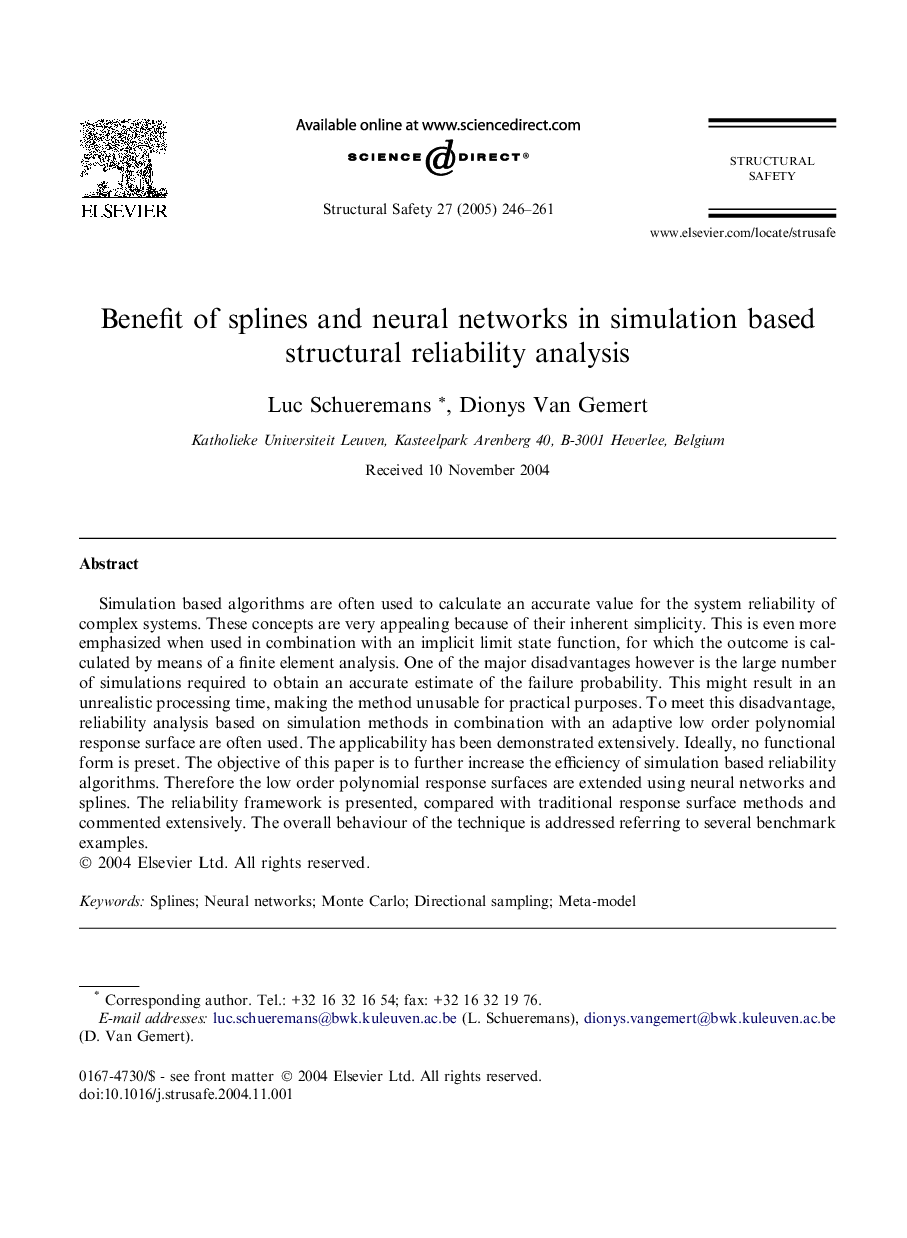| Article ID | Journal | Published Year | Pages | File Type |
|---|---|---|---|---|
| 10295711 | Structural Safety | 2005 | 16 Pages |
Abstract
Simulation based algorithms are often used to calculate an accurate value for the system reliability of complex systems. These concepts are very appealing because of their inherent simplicity. This is even more emphasized when used in combination with an implicit limit state function, for which the outcome is calculated by means of a finite element analysis. One of the major disadvantages however is the large number of simulations required to obtain an accurate estimate of the failure probability. This might result in an unrealistic processing time, making the method unusable for practical purposes. To meet this disadvantage, reliability analysis based on simulation methods in combination with an adaptive low order polynomial response surface are often used. The applicability has been demonstrated extensively. Ideally, no functional form is preset. The objective of this paper is to further increase the efficiency of simulation based reliability algorithms. Therefore the low order polynomial response surfaces are extended using neural networks and splines. The reliability framework is presented, compared with traditional response surface methods and commented extensively. The overall behaviour of the technique is addressed referring to several benchmark examples.
Related Topics
Physical Sciences and Engineering
Engineering
Civil and Structural Engineering
Authors
Luc Schueremans, Dionys Van Gemert,
